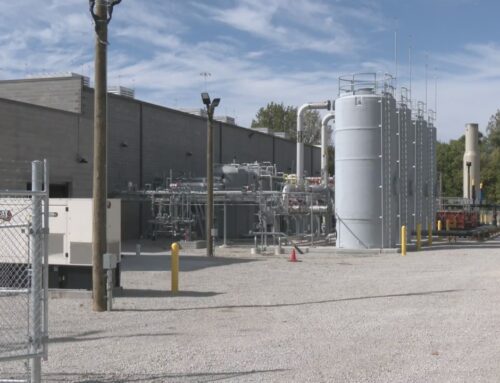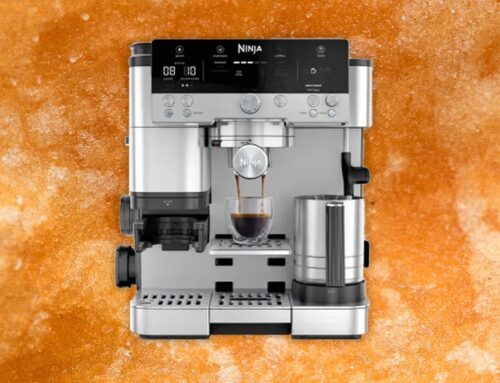Matt Crisp on agtech investing: ‘We need to get small in order to get big again’
October 1, 2025
After a decade or so of agtech investing, the sector has generated a lot of excitement, but the returns haven’t always matched the hype.
That’s forcing both founders and investors to rethink what success looks like, says industry veteran Matt Crisp (MC), who spoke to AgFunderNews (AFN) at the sidelines of the World Agri-Tech summit in London last week.
“This might be a market where we really need to retrench and be tactical, targeted and thoughtful,” said Crisp, who cofounded seed innovation company Benson Hill, which filed for bankruptcy earlier this year and has since re-emerged as Confluence Genetics.
“It might not be 10x or 50x returns but having some solid returns of capital to demonstrate to outside money that this is an industry that can make returns that are attractive.”
AI, meanwhile, has the potential to make the sector more attractive to investors by enabling firms to create superior products more quickly, added Crisp, who has just cofounded a startup (Quercus Biosolutions) using AI to design mini proteins for crop protection.
“We partnered with an organization [drug discovery startup Ordaos Bio], which directed its platform to human medicine, and looked at how we can apply that to our category. And I think it’s going to redefine how we believe biological innovation can be conducted.
“It’s really exciting and I think it makes the space more investable now with higher return expectations on a lower amount of capital input.”
AFN: Where are we in the current down cycle?
MC: I think we’re certainly bottomed out, or, you know, we’re skimming along the bottom as it were. A lot of that capital has exited the space so it’s forcing a range of new approaches and new operating models within companies.
Now today, we’re fighting against capital being deployed into a category where there haven’t been a lot of exits at all. To state the obvious, investors are only able to deploy capital to the extent that they’ve got comparables that demonstrate they can return that money to their own investors.
AFN: Do we need to recalibrate return expectations in agtech?
MC: We’re in a challenged moment where I think we need to get small in order to get big again. We need to be very, very focused. We need to put some wins on the board.
I know that that’s a little bit antithetical to what a venture capitalist might want or see where they’re swinging for the fences and they need a Grand Slam or a couple big home runs and they win. This might be a market where we really need to retrench and be tactical, targeted and thoughtful about getting some singles and doubles. And, you know, having some wins.
It might not be 10x or 50x wins, but you know, having some solid returns of capital to demonstrate, again, to outside money, that this is an industry that can make returns that are attractive.
AFN: You’ve talked about the ongoing imperative for cross asset class investing?
MC: For a long, long time, I think that the capital has missed a little bit of the target in ag because it does very much require a different line of thinking. It’s not just high-cost growth venture-like money that needs to be thrown into successful solutions in this category. Oftentimes there’s a capital intensity or infrastructure requirement and these kinds of things must have cross asset class investing.
Is that ecosystem developed in our space? No. Is it developed more today than it was three or five years ago? I think absolutely. I think that if there’s one area where we’ve seen more and more intelligent capital deployment, and we’re going to probably see it in the next two or three years as well, it’s around growth-based solutions that have positive unit economics and therefore can be underwritten for a 2x or 5x investment and not a 10 or 20x investment. And those dollars are larger.
They’re allowing companies that have validated, proven solutions to scale in ways that we hoped some of the more high risk, high return, innovative ecosystem folks might have done five years ago.
AFN: What about new sources of capital from other industries?
MC: It’s a provocative idea. But the same way that technology companies need to become energy companies, I have to wonder that the biggest tail that wags the dog of our agrifoodtech value chain is human health care. And who would stand to benefit by a systems-based change? In my mind, a logical stakeholder group would be insurance companies.
These are organizations that are enormous in size and scale, and they have the power, if they really wanted to, to come in and influence some pretty systems-wide change.
Will that happen? It’s a hypothesis. But if we’re really serious as a society about food as health, about addressing a really massive chronic disease challenge, especially in the United States, then we need to start with food and that’s going to require an amount of investment that no venture capitalist is going to be able to provide.
AFN: What about tech money?
MC: It’s been a long time since we talked about Amazon’s acquisition of Whole Foods. But I think that’s a really interesting case study or example of where an organization has the size, the scale, and the technology backbone to help us begin to rethink how nutrition might be deployed to consumers. Is there a larger thesis there? Possibly.
AFN: How do you see AI impacting ag and the agtech investment thesis?
MC: I think that in ag, AI is very under realized to state the obvious, but I do think that among some other enabling technologies, it is going to bring online innovation and subcategories of ag or categories of ag that we’ve historically had a lot of strikeouts in.
For instance, crop inputs. I’m involved in a company, Quercus Biosolutions, that I founded with my colleague John Lightner. It’s an extraordinarily innovative company focused on AI-based mini protein design and crop protection. It is utilizing a tech that is extremely powerful to overcome some of the very fundamental issues that this space has faced over the course of the last 10-15 years.
Nobody’s going to give an agtech company $10 or $15 million to develop a de novo AI discovery design engine. So we partnered with an organization, Ordaos Bio, which directed its platform to human medicine, and we’ve looked at how we can apply that into our category. I think it’s going to redefine how biological innovation can be conducted and overcome a lot of the challenges.
We’re now rethinking how we have developed these products historically, essentially collapsing the design and discovery and development [process] into one construct. And that’s not possible using any human-driven, sequential product development construct that we’ve used since nearly ever in developing any chemistry or any biological for crop protection. And so again, AI is enabling this rethink of exactly how we do product development.
I think it’s really exciting and it makes the space more investable now with higher return expectations on a lower amount of capital input. And again, that’s all tech enabled. I think the investment community will need to put behind us, you know, some of the failures and the misfires, and really look at this category as an opportunity and not a liability area.
AFN: Can you highlight some other areas of agtech that you think are exciting?
MC: AI is going to be near the top of my list. But I think technologies in channel digitization are also interesting. They play towards this idea of a more bespoke model maybe if we do see an evolution beyond the commodity system. So I think fintech can fall within that. There’s a lot of inefficiencies in how farmers lend money, about how money moves across some parts of the ag value chain.
Another area I’m excited about and watching is robotics and automation. I think especially in the United States, we’ve got a litany of issues in respect of labor and anything that’s going to help stabilize that environment for our producers, I think that’s going to be very valuable tech in the next few years.
Further reading:
Share this article
Search
RECENT PRESS RELEASES
Related Post




